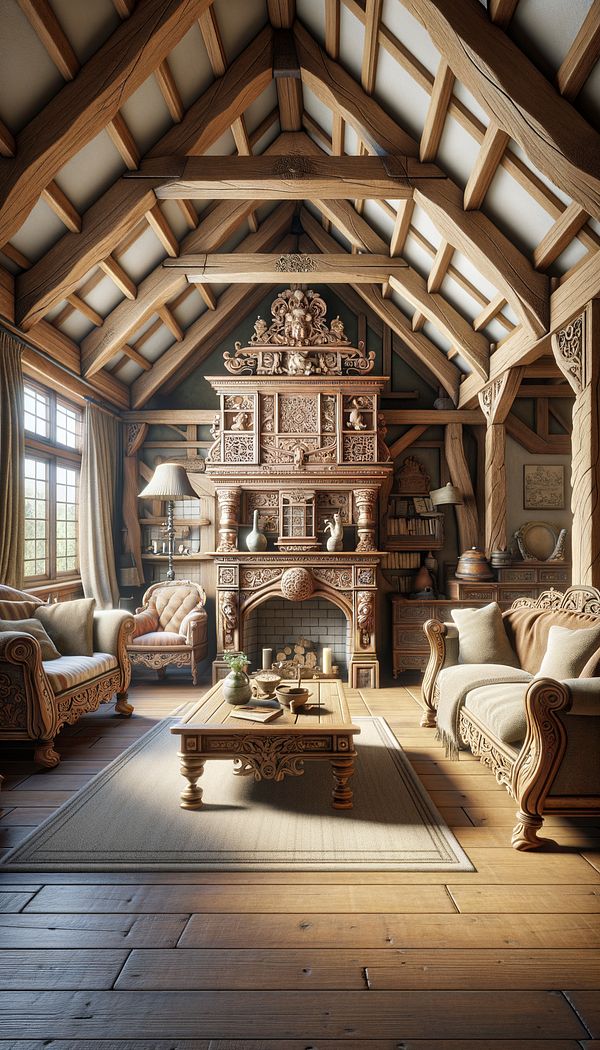What is Dutch Renaissance?
A style of design and architecture that flourished in the Netherlands during the 16th and early 17th centuries.
Description
The Dutch Renaissance is a period in the history of the Netherlands that saw a prolific fusion of art, architecture, and design, inspired largely by the broader European Renaissance movement. This period was marked by a distinct interpretation of classical themes and ideas, meshed with local traditions and innovations. Unlike the Italian Renaissance, which often leaned towards the grandiose and dramatic, the Dutch Renaissance showcased a more restrained aesthetic, emphasizing harmony, proportion, and a meticulous attention to detail.
Characteristic features of Dutch Renaissance architecture and design include the use of red brick as a primary building material, ornate gables, stepped facades, and elaborate chimney pieces. Interiors often featured exposed wooden beams, decorative plasterwork, and intricately carved furniture. This era also saw the introduction of the Gable as a significant architectural element, often elaborately decorated and signifying the wealth or status of the homeowner.
The movement not only influenced the physical landscape of the Netherlands but also had a lasting impact on Dutch culture, contributing to the development of a distinct national identity centered on principles of innovation, craftsmanship, and a deep appreciation for the arts. The Dutch Renaissance played a crucial role in the transition from medieval to modern in Dutch art, architecture, and design.
Usage
In interior design, the Dutch Renaissance influence can be seen in the popularity of replica or inspired furniture pieces, such as ornately carved wooden chairs, cabinets, and tables. Modern interpretations might incorporate the distinctive stepped, or gabled, silhouettes in architectural elements or decorative accessories. Residential and public buildings restored or constructed in this style often seek to replicate the harmonic proportions and detailed craftsmanship that define the era.
FAQs
-
How does Dutch Renaissance differ from Italian Renaissance?
The Dutch Renaissance differs from the Italian Renaissance in its more restrained aesthetic, focusing on harmony, proportion, and detailed craftsmanship rather than the grandiose and dramatic styles typical of the Italian Renaissance. Additionally, it incorporates more local traditions and materials, such as the use of red brick and the distinctive stepped gables.
-
What are some characteristic features of Dutch Renaissance design?
Characteristic features include the use of red brick as a primary building material, stepped facades, ornate gables, elaborate chimney pieces, and the introduction of the gable as a significant architectural element. Interiors often featured exposed wooden beams, decorative plasterwork, and intricately carved furniture.
-
Where can I see Dutch Renaissance architecture today?
Dutch Renaissance architecture can still be seen throughout the Netherlands, particularly in historical buildings, homes, and public spaces in cities like Amsterdam, Leiden, and Utrecht. Many buildings from this period have been preserved or restored, showcasing the era's distinctive aesthetic.
Practical Application
When incorporating Dutch Renaissance elements into a space, prioritize harmony and proportion while honoring the craftsmanship and detailing characteristic of the era. Consider integrating ornately carved wooden furniture, decorative gables or replicas thereof, and materials like red brick or plasterwork in finishes. Adding these distinctive Dutch Renaissance features can infuse a space with a sense of history and timeless elegance.
-
Architectural Elements199 articles
-
Design Styles478 articles
-
Furniture Types599 articles
-
Decorative Techniques322 articles
-
Historical Periods & Movements150 articles
-
Dhurrie RugA Dhurrie rug is a traditional flat-weave rug from India, known for its durability, lightness, and versatile patterns.
-
Sawbuck TableA sawbuck table is a type of table characterized by its X-shaped supports.
-
GobelinGobelin refers to a type of luxury tapestry or fabric known for its intricate designs and historical significance.
-
Goblet PleatA type of curtain heading that resembles the shape of a goblet.
-
FillFill refers to materials used to provide softness, volume, or insulation in interior design elements.
